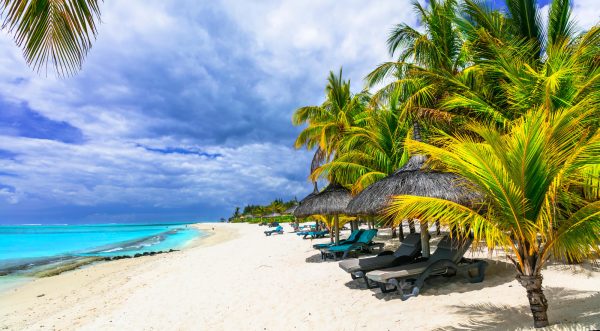Visit Mauritius and enjoy vacation-perfect weather almost all year round! While some months are warmer and others cooler or rainier, don’t worry—this doesn’t mean endless rainy days, even during the cooler, wetter seasons. No matter when you go, Mauritius offers stunning landscapes, beautiful beaches, and a relaxing atmosphere for the perfect getaway.
Mauritius sits between the Equator and the Tropic of Capricorn, giving it a subtropical climate. The island enjoys mild tropical marine weather year-round, with hot and humid summers from November to April and a relatively cool, dry winter from June to September. May and October are transitional months. The temperature difference between seasons is relatively small, though coastal areas tend to be warmer than the central plateau. From May to October, stronger winds from the east and southeast can influence your beach days.
The wettest month? February.
The driest? October.
Mauritius also falls within the South-West Indian Ocean (SWIO) cyclone zone, with the official cyclone season running from November to mid-May. February is typically the most cyclone-prone month due to the high ocean temperatures.
Rainfall: Should You Worry?
A common misconception is that, like in some Asian countries, Mauritius experiences monsoons with weeks of non-stop rain. The reality? Not really! From experience (and from chatting with locals), rain showers mostly happen at night when the air cools down. By morning, the temperature rises again, and the sun makes a grand entrance. This pattern might shift slightly in June, July, and August, which are a few degrees cooler, but even then, rain is usually occasional rather than constant.

The Best Time to visit Mauritius
Technically, you can visit year-round! But if you want guaranteed summer vibes, warm ocean waters, and plenty of sunshine, aim for October to May.
One hot topic in the Mauritius Tourism Travel group is whether to stay on the island’s east coast. While undeniably beautiful, this side of the island is best enjoyed from November to March when the temperatures are highest and strong winds are less of a concern. Meanwhile, the north and west coasts are fantastic all year round, even in the cooler months (June–September). During these months, you can still hit the beach, but the milder temperatures are also perfect for outdoor adventures—like hiking the famous Le Morne Brabant!
Which Month Do We Recommend the Least?
If we had to pick one, February would be the trickiest month for a Mauritius getaway. According to local meteorological stats, it’s the most cyclone-prone month. While it’s also one of the hottest times of the year and still a peak holiday season, there’s a small risk of storms disrupting your plans. That being said, many travelers visit in February and still have an amazing trip! Just keep in mind that cyclones are most frequent and strongest during this month.
If you’re still wondering where to stay during your trip, the west coast is always a safe bet thanks to its sunny climate and calmer conditions year-round. A fantastic choice here is the Victoria Beachcomber Resort & Spa, a hotel loved by both couples and families. Located between Grand Baie and Port Louis, it offers spacious rooms with sea views, a long stretch of golden beach, and some of the most memorable sunsets on the island. With multiple restaurants, a relaxing spa, and plenty of activities for all ages, it’s the kind of place that makes every season in Mauritius feel like the perfect time to visit.



